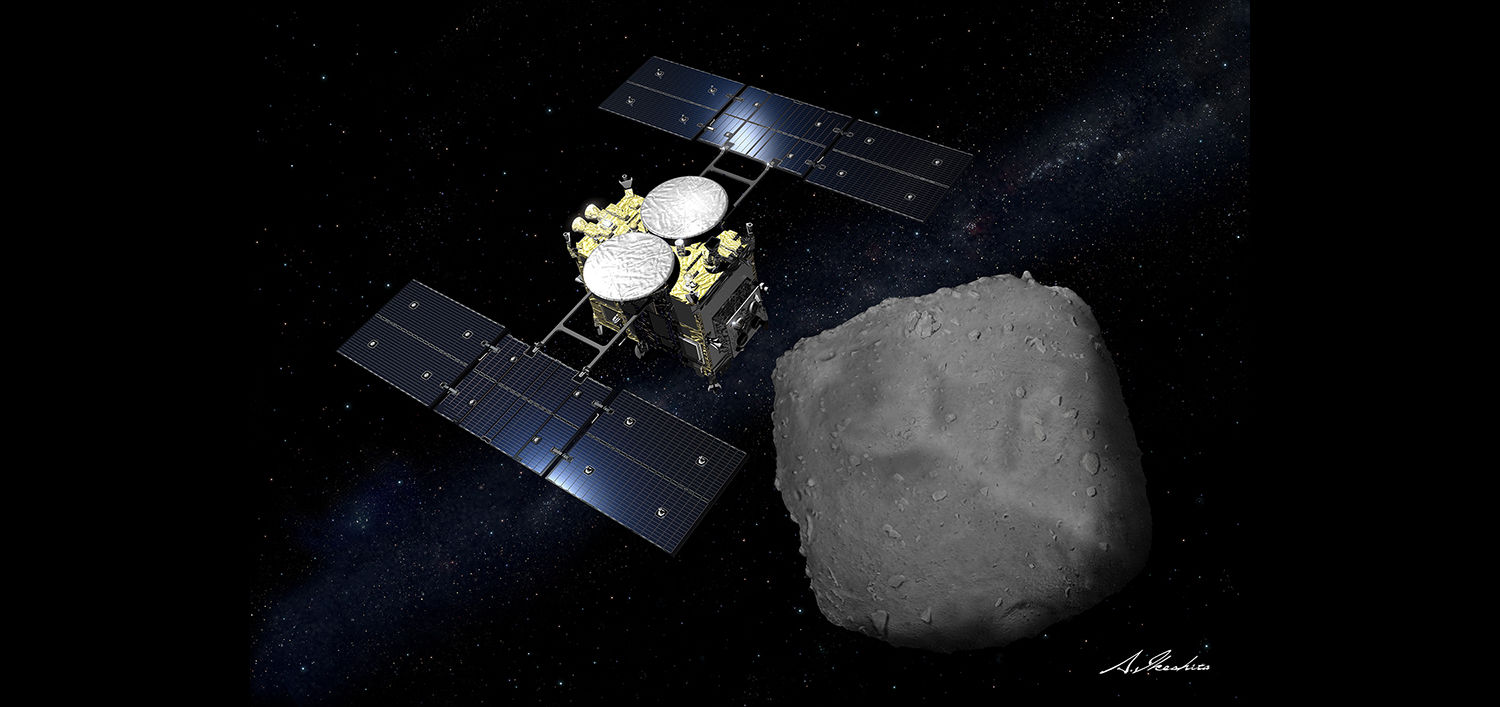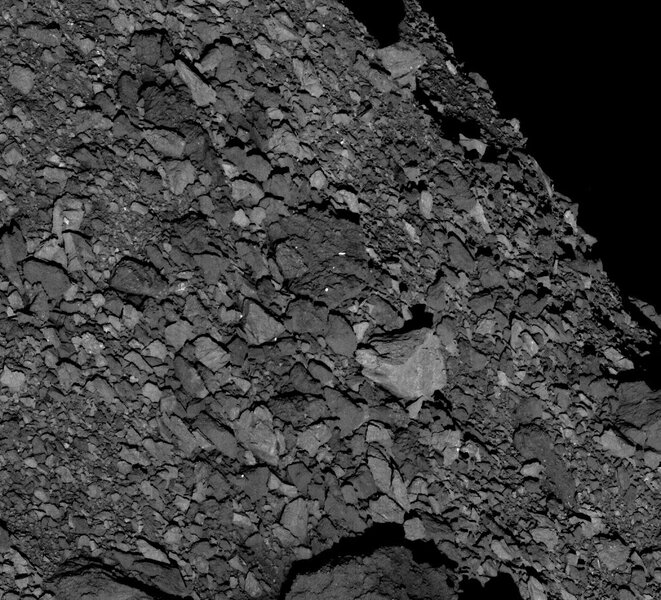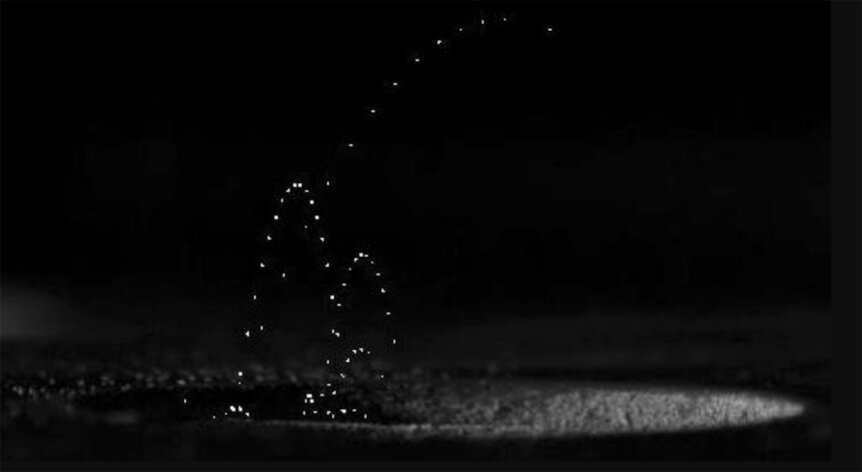Create a free profile to get unlimited access to exclusive videos, sweepstakes, and more!
Sunlight forces tiny asteroids to get rid of their dust bunnies
Small asteroid surfaces are dustless, possibly because they're zapped by UV light.

Why are the surfaces of the tiny asteroids Ryugu and Bennu rocky and not smooth?
This came as a surprise to planetary scientists when the two small rocks were visited by the spacecraft Hayabusa2 and OSIRIS-REx (respectively): Instead of the surfaces being mostly covered in smooth dust, as has been seen in other rocky bodies like the Moon, Mars, and other asteroids like Eros, they instead looked like the site of a demolition pit, just rocks of all sizes piled up everywhere with no dust at all.
The expectation of seeing dusty surfaces is due to the rocks wearing down over time. As an asteroid rotates it brings rocks on its surface into sunlight on the day side and into darkness on the night side. That can be a huge change in temperature, hundreds of degrees. When heated the rocks expand and when cooled they contract, creating stress. Eventually the rocks crack, breaking down into smaller and smaller pieces until you get dust everywhere.
Eros is a near-Earth sausage-shaped asteroid about 16 kilometers long and 11 km through, and close-up images of it from the NEAR mission showed it had a dusty surface. Yet the smaller asteroids Ryugu and Bennu don’t. Why not?
New research shows that the key here is the word “smaller”: Because Ryugu and Bennu are so small they have very weak gravity, and lost their dust [link to paper]. The process that removed it? Electrostatic repulsion.
If that sounds familiar then you may be remembering an article I wrote in May 2022 about Bennu’s bizarre habit of spitting rocks into space. This was seen in many images, with some of the rocks being up to 10 centimeters across. Micrometeorite impacts might be to blame for some, but another idea is that ultraviolet light from the Sun zaps the rocks, knocking electrons off atoms on their surfaces, building up an electric charge. When the charge gets high enough the rocks are flung away from Bennu, similar to two magnets repelling each other if their north poles are aligned. It’s the same effect, though with an opposite outcome in practice, when you rub a balloon on your hair and pull it away from your head; the hair gets drawn out with it because electrons from your hair flow to the balloon, giving it a negative charge and leaving your hair with a positive charge. They attract each other.
The same thing may be why Bennu and Ryugu are dustless. This same principle can fling dust into space, and works even better because dust grains are small and have far less mass than rocks, so they can get shot away more easily and at higher speeds.
What the new work did was simulate how that would happen for two asteroids of similar structure and composition, but one was small, roughly 500 meters wide — about the same size as Ryugu — while the other was several kilometers wide, more like Eros.
The big difference here is gravity. The smaller asteroid lost all its dust in just a few million years — short, in terms of the lifetime of an asteroid orbiting the Sun — while the bigger one could hold on to more. That’s probably why we still see dust on the surface of Eros but not Ryugu and Bennu.
This isn’t exactly shocking news*, but what’s interesting to me is how rapidly the process works. It’s faster for asteroids closer to the Sun, and both Ryugu and Bennu have mildly elliptical orbits that take them somewhat closer to the Sun than Earth and out to close to the orbit of Mars. That’s close enough that they get hit by UV sunlight pretty well, so this process is efficient. Both asteroids are so small that their gravity is incredibly weak; just standing on either of them would be difficult without launching yourself into space if you so much as twitch.
They’re also very low density — we call them rubble piles because they’re essentially big bags of rocks held together by weak gravity and the van der Waals force. That also makes their gravity weak. In fact I wondered when we first saw images of them if small impacts shook them enough that any dust would fall between the rocks on their surface and just basically sift its way to the asteroids’ interiors. Given how fragile the rocks are, though — on both asteroids you could easily crush the rocks in your hand, they’re so delicate — I don’t think this would work. Small impacts may not shake the asteroid much at all, since the rocks would just crumble instead of pass seismic waves through.
Still, these wee asteroids are full of surprises, so I wouldn’t count anything out.
Asteroids are leftover bits of material from the construction of planets, and in some cases are so old, or have material in them so old, they date back to the early days of the solar system. Studying them tells us about the conditions of our neighborhood when it was still being built, and how planets formed. Some also have the unfortunate tendency to impact Earth, so understanding their structure better could help us prevent future collisions.
Either way, studying them is A Good Thing™. Also, they’re just so weird and cool and unexpected. A lot of what we learn is just fun. Dust blown off them by the power of sunlight and electrons! Amazing.
* HAHA! “Shocking”! Because of electrostatic buildup which is like when you get zapped when you touch a doorknob after walking on a carpet! Haha! C’mon, give me this one.




























